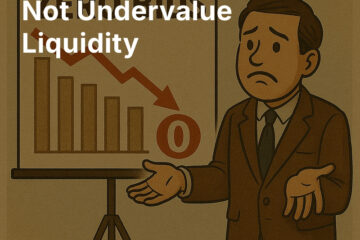Real Estate: The Lay of the Land
Stocks and real estate both suffered sharp declines during the Great Recession, and both have recovered in the more-than-six years since the downturn officially ended.
Data Source: NCREIF, Federal Reserve Bank of St Louis, Bloomberg
The graph above shows the relative performance of three indices since the recession. Two are real-estate indices, the NPI and Case-Shiller, showing total commercial real estate returns and home price appreciation respectively; both are broad and encompass the entire United States (and in the case of the NPI, all types of commercial real estate). The third index, provided for comparison, is the total return of the S&P 500.
The NPI is not a particularly helpful index for retail investors, who can typically gain exposure to real estate only through their investment in their own home, through REITs (which are more closely correlated with the stock market), or perhaps through the purchase of individual rental or commercial properties. (In the last case they are exposed to a variety of risks incumbent on a lack of geographic and other kinds of diversification.) The NPI also conceals significant variation among different types of commercial real estate (office, industrial, apartment, retail, etc.) and different cities and regions.
Nevertheless, it’s a useful gauge — a data point to help build a macro view of the state and direction of the U.S. economy. An examination of the forces driving the recovery of real estate returns, and a view of their trends, can also help evaluate where we stand in the current cycle. As with the current stock market environment, six years of strong performance have investors wondering how much further the bull can run before it turns.
What are the current trends?
First, the larger picture is one of moderate economic growth and low interest rates. The Federal Reserve will likely be raising its short-term interest rate target above zero for the first time since before the recession — but even so, its own guidance and the consensus of analysts both see a low-interest-rate environment for an extended period. In such a moderate-growth and low-rate environment, real estate has historically performed well. Slowly rising rates may mean that real estate’s performance doesn’t match its track record of the past six years, but also don’t necessarily presage disaster. (The same could be said for stocks.)
Trends, though, may differentiate real estate sectors and markets. What could outperform, and what could underperform?
- Recent weakness in brick-and-mortar retail has highlighted for us the macro forces at work in retail, both social and technological. We believe the aging of Baby Boomers and the predominant culture of Millennials both trend away from conspicuous consumption of fashion and luxuries, and will represent a generational shift detrimental to traditional retailers — especially malls. In addition, these consumer cohorts and others are continuing to move their shopping online. To us, these trends suggest that retail real estate will continue to come under pressure, and industrial real estate — particularly warehouses — will benefit.
- Office real estate has significantly lagged other real estate sectors during the present expansion, and in a modest way business has moved online too; businesses took advantage of the downturn to increase efficiency and improve margins, and that has meant higher occupational density and the more thorough utilization of unused space already under lease. As the economy continues its modest expansion, job growth continues to accelerate.
- Apartments have performed better than the broad index, driven by demographic trends (recovering rates of household formation and declining rates of home-ownership). Rents have been strong and vacancies have been low. Consequently, prices are at record highs. Together these trends may act to prolong construction and extend the development pipeline; analysis from Deutsche Bank suggests that the delivery rate for new units is running 34 percent above the long-term average and will do so through 2017. This suggests that many attractive apartment markets are fully valued and that new supply will be robust. Investors will need to be tactically cautious, selecting judiciously on the basis of market and demographics. If apartments have been the star so far in the recovery, they may become more difficult moving forward.
Single-family housing has also seen a strong recovery since the recession, ticking up after a disappointing beginning to 2015:
Source: Federal Reserve Bank of St Louis
The acceleration of household formation, as Millennials accumulate assets, marry, have children, and buy homes, should allow home prices to continue to appreciate in a baseline moderate-growth, low-interest-rate environment. As we have observed in previous notes, that makes us basically positive on homebuilding, although we would rather gain exposure to the sector through the big homebuilding retailers rather than the home improvement companies themselves.




